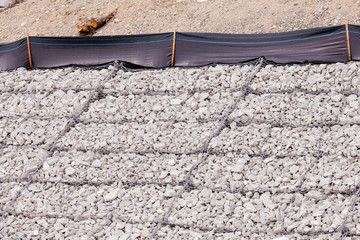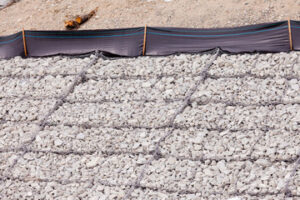Keeping kids and pets out of the way while Chatsworth Plumbing professional works on your pipes is important. You may also want to plan for pet or child-sitting services while the work is done. Tunneling can repair a broken sewer line without digging up your entire property. It involves using a jackhammer to dig a tunnel down the broken pipe.
Trenchless Repair
Trenchless pipe repair isn’t only less invasive and more cost-effective and long-lasting than traditional methods. This is especially true when it comes to sewer line repair. In the cured-in-place pipe (CIPP) method, a crew inserts an epoxy-coated sleeve into your sewer drain. The sleeve is then inflated and allowed to cure, which creates a brand-new pipe within your old one. The sleeve can last up to 100 years and is corrosion-resistant, ensuring your home’s sewer system will be as good as new for decades. In addition, less labor is required for trenchless pipe repairs, and landscaping doesn’t need to be replaced, lowering the project’s overall cost.

Trenchless sewer repair utilizes specialized technology to conduct inspections and accurately locate damaged pipes without destroying surrounding areas of your property. Before work begins, a camera is sent down the pipe to evaluate the damage. This helps the plumbing professionals determine the best course of action for trenchless repair.
The main benefits of trenchless repair include:
It’s less invasive – Sewer pipes run underground, making them difficult to access and often dangerous to dig up. Traditional repairs require digging up floors and tearing down walls in order to expose the broken pipes. Trenchless repair is much less disruptive, as it only requires a few small holes to be dug in order to complete the project.
It saves money – Many times, sewer lines are buried in hard to reach places that are expensive to replace. Traditional excavation can also cause significant damage to your landscaping, which can add up in terms of cost and time. Trenchless repair keeps the costs down by using minimally invasive techniques.
It’s more efficient – Pipe bursting is one of the most popular trenchless repair methods and it’s designed to be both fast and effective. The process uses a winch with a bursting head to pull a new pipe in its place. The head simultaneously bursts the old pipe and moves it away, while pulling in the new pipe. The new HDPE pipe isn’t susceptible to corrosion and can last up to 100 years, reducing the need for future repairs or replacements.
Pipe Splitting
Pipe splitting is a method of trenchless repair that uses hydraulic equipment to break apart old pipes underground and simultaneously pulls in new ones. It’s an effective way to replace damaged sewer, water or gas pipes without digging large trenches. Allen Watson Limited is one of the few plumbing companies in California that offers this service.
While a dig-and-replace technique can be appropriate in severe cases, such as a completely collapsed sewer pipe, the average homeowner wants a repair method that can be completed quickly and with minimal impact to their home and yard. For this reason, the pipe bursting process is gaining popularity as a replacement alternative to traditional excavation methods.
This method involves feeding a head that is larger at its base than the diameter of the existing pipe into the pipe, which causes it to expand and break apart. The space is then filled with a new pipe, usually fused HDPE or PVC. This method can also be used to upgrade a pipeline’s carrying capacity by replacing smaller pipes with larger ones, known as upsizing.
The advantages of this method are numerous. It can save time, money and labor by eliminating the need for excavation and backfill. It’s also more environmentally friendly, as it produces less waste and does not require the use of heavy machinery or chemicals. In addition, it’s a safer technique in that it minimizes the risk of structural damage to the surrounding soil.
Before starting a pipe splitting project, it’s important to do utility locates and excavate to determine the location of the existing pipes. Next, the technician will prepare an entry point and receiving pit. This includes removing any concrete and clearing the area around the existing pipe. Once the entry point and receiving pit are prepared, the technician will feed a specialized tool called an expander head into the damaged pipe. This tool will be guided through the existing pipe and progressively expands as it moves through the pipe, breaking up the original pipe into small fragments and pushing them into the ground.
This process is similar to cured-in-place-pipe (CIPP), but the tool that’s fed into the pipe to create the new line is more advanced. While CIPP is done with resin-soaked fiber sleeves, the pipe splitting process utilizes a hydraulic pulling system and a specialized multi-bladed cutting head.
Pipe Re-Piping
The pipes that carry fresh water into your home and carry wastewater out are essential for keeping your plumbing system working properly. But over time, these pipes can become corroded or damaged. If you notice that your pipes are beginning to deteriorate, re-piping may be the best option for you. Repiping involves replacing your old pipes with new ones made from materials like copper or PVC. This is a major project, so it’s usually done by a professional plumber.
If you’re not sure whether re-piping is right for you, have a plumber come out and inspect your current pipes. He or she will be able to tell you what options you have for replacement, and can recommend the best type of pipe for your needs.
One of the main signs that it’s time for a repipe is discolored water. This can be caused by rust or corrosion in the pipes, and can lead to a number of issues including low water pressure and bad taste. It’s important to get the problem fixed as soon as possible, because repiping is typically more expensive than simply fixing the existing pipes.
A repipe can be a lengthy process, and will involve opening up walls in your house to replace the existing pipes. The plumbing team will cover your floors and furniture to protect them from dirt and debris, and will make small cuts in the drywall to locate and remove the existing pipes. Once the old pipes are removed, the plumbers will install the new pipes and connect them to your plumbing system. Then, the drywall will be patched and repainted to restore your home to its original condition.
The repiping process can take a few days to a week, depending on the size of your home and the number of rooms with plumbing. It’s important to plan accordingly, as you will not have access to your water during this time. It’s a good idea to find somewhere else to stay while the work is being done, and to clear out any belongings that are in the way of the plumbers.
Sewer Line Repair
If your sewage line has a serious leak or crack, you’ll need to call in the professionals. Unpleasant odors, wet floors, cracked foundation, and poor drainage can all be signs that your sewer line has a problem. A broken sewer line can also cause sewage to back up into your home, which isn’t just disgusting but extremely dangerous for your family and pets.
A traditional method for sewer line repair involves digging up your entire property and replacing the damaged pipe with a new one. This is a very invasive process that can result in extensive damage to your sidewalks, driveways, patios, and lawn. It can also take a significant amount of time to complete.
There are several ways to perform a trenchless sewer line replacement. Most of these methods involve running a camera through your pipes to check their condition. Once your plumber has identified the problem, they can decide how to fix it.
For minor problems like small cracks and leaks, they may use a method called pipe lining. This method involves inserting an inflatable tube covered in epoxy into your existing sewage pipe. Once the pipe is inflated, it presses against the existing pipe and fills in any cracks or holes, creating a smooth surface that prevents future blockages. This method is also less expensive than other trenchless methods and can be completed within a few hours.
More serious problems may require a complete pipe replacement. If your pipes have sustained extensive damage or are made of a material that is known to corrode, they may need to be replaced entirely. Corroded pipes can break apart, leading to a costly, messy, and time-consuming excavation.
If your plumbing expert recommends a sewer line replacement, it’s important to know the process involved. A traditional sewer line replacement can be very invasive and cause substantial damage to your landscaping and hardscaping. Your neighbors will likely need to be temporarily relocated and your driveway and sidewalks will need to be dug up. A trenchless sewer line replacement can be less invasive, but it will still require some digging.




 They started by publishing eBooks on Kindle. Then they turned those books into audiobooks on Audible. This method quickly brought in a thousand grand a month! Read on
They started by publishing eBooks on Kindle. Then they turned those books into audiobooks on Audible. This method quickly brought in a thousand grand a month! Read on